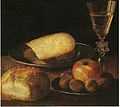Musée Malraux
| Musée Malraux | |
|---|---|
 Location in France
| |
| Established | 1961 |
| Location | Le Havre, France |
| Coordinates | 49°29′06″N 0°06′09″E / 49.485043°N 0.102616°ECoordinates: 49°29′06″N 0°06′09″E / 49.485043°N 0.102616°E |
| Type | Modern Art |
| Website | http://www.ville-lehavre.fr/rubrique/musee-malraux |
The Musée Malraux (otherwise called MuMa or Musée d'art moderne André Malraux) is a museum in Le Havre, France. It was designed by Atelier LWD, an architecture studio led by Guy Lagneau, Michel Weill and Jean Dimitrijevic. It is named after André Malraux, who was Minister of Culture when the museum was opened in 1961. The museum contains one of the most extensive collections of impressionist paintings in France.[1][2]
History
Lagneau was chosen by Georges Salles, director of National Museums, to undertake construction between 1952 and 1961 of the first major museum built in France after World War II.[3] Lagneau undertook the work in collaboration with Raymond Audigier, Michel Weill and Jean Dimitrejvic.[4] The museum, inaugurated in 1961 by the Minister of Culture, André Malraux, was one of the key elements of the reconstruction of Le Havre.[5] The museum was recently renovated by Lawrence Baldwin.[4]
Structure
The museum departs from the tradition of closed museums cut off from the exterior world. Lagneau worked closely with the curator, Reynold Arnoult to develop a flexible space in harmony with the marine environment.[3] Facing the sea, the museum is a smooth and transparent assembly of glass and steel posed on a concrete pad. Installed above the roof, the aluminum louver blades were created by the engineer Jean Prouvé, providing control over the natural light that floods the building. Le Signal, a concrete sculpture by Henri Georges Adam, frames a fragment of the landscape and strongly emphasizes the exceptional situation of the building at the harbor entrance.[4]
The large windows of the Malraux museum let in the highly variable light of the Normandy coast, a light that inspired many of the painters in the museum's collections. The light is carefully filtered before flooding inside the building. To the east, opal glass panes attenuate the rays of the morning sun. The facade to the west has three levels of filtration: a wall of glass screens on which horizontal lines have been printed intersects with the vertical lines of pivoted louvers, creating a grid of variable density. When light rays enter horizontally, blinds complete this scheme. On the ceiling, translucent square tiles filter the light reflected by the louver installed above the roof. Inclined blades break the sun and deliver a soft luminosity to the heart of the building.[4]
Collection
The museum houses a collection of art spanning the past five centuries, with the impressionist painting collection being the second most extensive in France after that of the Orsay Museum in Paris. There are paintings by Claude Monet and other artists who lived and worked in Normandy. There are paintings by Camille Corot, Eugène Boudin (with the largest collection of his works in the world), Eugène Delacroix, Gustave Courbet, Edgar Degas, Édouard Manet, Pierre-Auguste Renoir, Paul Gauguin, Alfred Sisley, Camille Pissarro, Paul Sérusier and Édouard Vuillard. Modern art is also well represented with works by artists such as Henri Matisse, Albert Marquet, Raoul Dufy, Kees van Dongen, Fernand Léger, Alexej von Jawlensky and Nicolas de Staël. There is also an old masters section displaying paintings of Hendrik ter Brugghen, José de Ribera, Simon Vouet, Luca Giordano, Francesco Solimena, Hubert Robert, John Constable and Théodore Géricault. One of the museum's latest purchases is Vague, par temps d'orage by Gustave Courbet. The collection of Olivier Senn (1864–1959), given to the museum in 2004, contains more than 205 paintings and many drawings by great masters of impressionism and modern art.
-

Etude pour des barques de pêche, Eugène Boudin
-

Nature morte aux fruits et au gibier, Alexandre-François Desportes
-

Enterrement d'un enfant à Villerville (1884), Édouard Joseph Dantan
-

La Valse, Félix Vallotton
-

A la fenêtre, Édouard Vuillard
-

Nature morte aux fruits, fromage et pain, Sébastien Stoskopff
-

The Fire of Rome, 18 July 64 AD, Hubert Robert
-

Dusk over the port of Le Havre, Louis-Eugène Boudin
-

Paysage de Te Vaa, Paul Gauguin
-

The Calling of St. Matthew, Hendrik ter Brugghen
-
Fécamp, bord de mer (1881), Claude Monet
References
Sources
- Labourdette, Jean-Paul; Auzias, Dominique (2010). "Musee Malraux". Le havre guide 2010. Petit Futé. ISBN 2-7469-2629-6.
- "Guy Lagneau". LeHavre (in French). Retrieved 2011-03-20.
- Malon, Claude (2006). Le Havre colonial de 1880 à 1960. Publication Univ Rouen Havre. ISBN 2-87775-408-1.
- "Architecture du musée Malraux : un écrin de lumière". LeHavre (in French). Retrieved 2011-03-20.
- "Le Havre, the city rebuilt by Auguste Perret". UNESCO. 15 July 200. Retrieved 2011-03-20.
